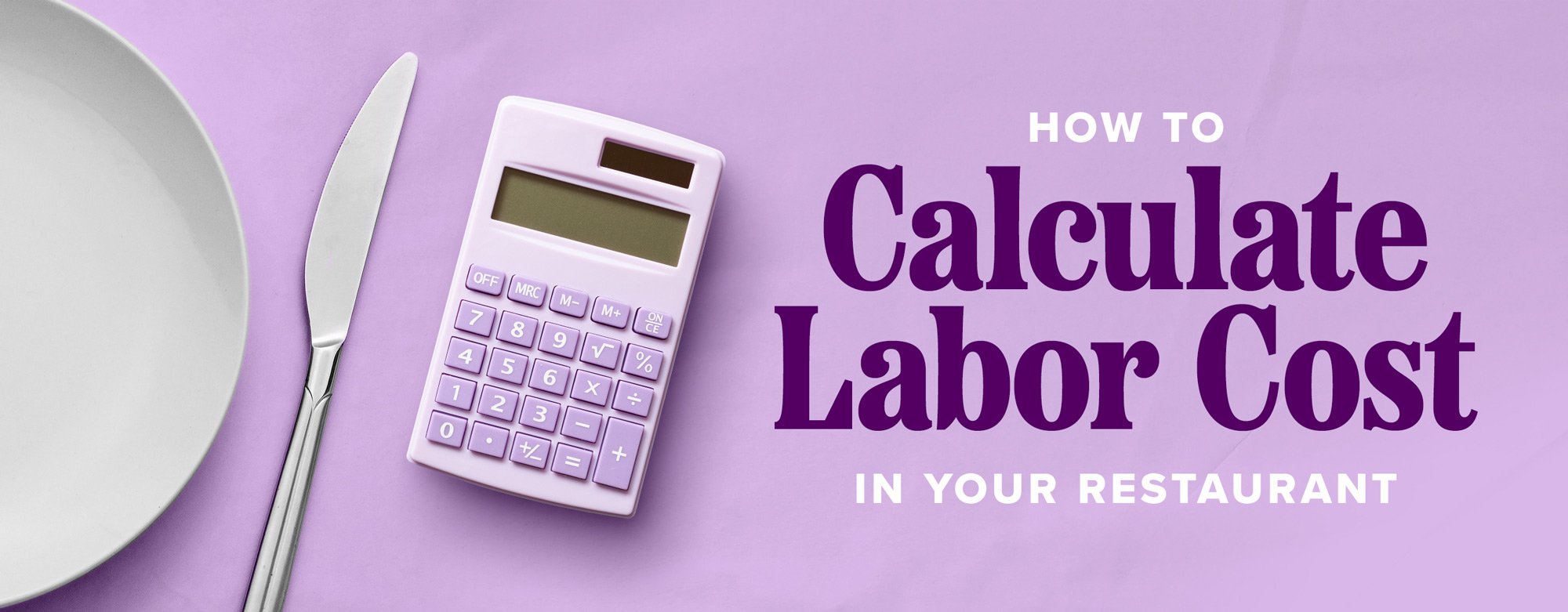
Opening a restaurant can be an exciting prospect and also a challenging financial endeavor. In a time when supply chain shortages are prevalent and employee turnover rates are high, you'll need to be able to calculate your restaurant's labor costs and adjust your budget accordingly to remain cost-effective. We'll walk you through the different ways of calculating labor costs and provide methods of reducing those costs to help you make the most of your finances.
What Are Labor Costs?
In a restaurant, labor cost is the total amount of money that is devoted toward paying employees. This is not limited to salaries but also includes taxes and benefits. Average restaurant labor costs are historically high. You’ll need to gather the following numbers to calculate your labor costs:
- Salary and Hourly Wages
- Overtime Amount
- Employee Benefits
- Amount Given in Bonuses
- Payroll Taxes
- Time Off (Vacation and Sick Days)
How to Calculate Labor Cost In Your Restaurant
To calculate restaurant labor costs, you’ll need to add together all of the funds that go into the wages and benefits of your employees. It can feel overwhelming at first when managing the number, but you can track your labor cost on a quarterly, monthly, or weekly basis to make it more digestible. Follow the steps below to learn how to determine labor costs for your business:

- Split out your employees with the same pay rates into a spreadsheet.
- Write down names, pay rates, and number of hours worked in one month. Be sure to include the amount paid toward overtime, bonuses, and payroll taxes as well.
- Multiply their hourly rate by the hours worked to find each employee’s labor cost.
- For salaried workers, divide their yearly salary by 12 to find their labor cost per month.
- Add all of those numbers together to find your total labor costs for one month.
- To determine labor costs for the year, add each month's labor costs together.
How to Calculate Labor Cost Percentage
Once you have added up your labor costs, you can use that number to determine your restaurant’s labor cost percentage out of your total revenue.
- Calculate your restaurant's annual revenue by adding up your total sales before taxes for the year.
- Take the total labor cost and divide it by your total revenue.
- Multiply your answer by 100 to figure out your restaurant's labor cost percentage.
Labor Cost Percentage = Total Labor Costs / Total Revenue (Pre-tax) x 100
Average Labor Cost for Restaurant
The average labor cost percentage for restaurants is between 25% - 35%, with quick service businesses usually seeing around 25% and fine dining establishments seeing closer to 35%. Restaurants should be aiming for a labor cost under 30%. Slow business seasons, employee turnover, and in-house food production elements, like elaborate food plating which involve more service time, can contribute to higher percentages.
How to Reduce Labor Costs in a Restaurant
Employee labor costs can be one of your biggest expenses as a restaurant owner. Luckily there are ways to mitigate this price tag. Try these techniques to reduce labor costs:
1. Optimize Your Restaurant Scheduling

Make the most of the staffing force you have by optimizing your restaurant work schedule.
- Schedule veterans and rookies together so newer staff members can learn on shift and not be overwhelmed.
- On your slowest business days, create a lighter schedule to prevent overstaffing.
- Implement split shifts so employee shifts are in two parts and breaks fall during lulls in service.
- Avoid overtime as much as possible. Overtime pay is usually time and a half, so you’ll want to manage work schedules to prevent employees from needing to stay longer than necessary.
- Use scheduling software that collects data to generate predictions for an optimized schedule based on peek traffic times.
- Offer attendance bonuses to reduce absences and encourage staff to arrive promptly for their shifts.
2. Train Your Restaurant Staff
A major part of keeping your labor costs down is training your staff to do their jobs well to make the most of their time on the clock.
- Thoroughly and regularly train staff. This may involve retraining staff to sharpen skills and remind everyone of proper procedures.
- Create an employee handbook detailing expectations and responsibilities that your staff can refer back to.
- Cross-train staff on other positions, like training servers to be hosts/hostesses or food runners, so they can fill in if necessary. This adds flexibility to your scheduling and reduces hiccups in service if someone needs to call out.
- Train servers on sidework tasks. Create a clear rotation and schedule for when these tasks should be performed. Be sure to keep tip regulations in mind when creating these expectations.
- Prioritize a positive work culture to improve employee retention rates. Labor costs increase every time you need to train a new staff member. Make an effort to keep your best employees.
3. Invest in Restaurant Technology

Technology has become an essential tool in the foodservice industry and can help you lower your labor costs.
- Invest in a POS system that can integrate with your scheduling tool to track trends and manage shifts accordingly.
- Offer mobile ordering options like kiosks at your front counter, booths, and tables to free up server time and reduce order errors.
- Provide your servers with handheld mobile tablets to enter order and process payment to save them the time of having to walk to and from a POS station.
- Upgrade to smart kitchen equipment to reduce effort and errors in the kitchen while improving consistency between orders.
- Utilize third-party food delivery apps like UberEats, Grubhub, and Postmates to free up your staff to perform essential tasks in your kitchen. Many of these apps also offer data software to help you track trends and adjust your menu and shift schedules accordingly.
Choosing how and where to make cuts that help reduce your labor costs can be a difficult decision for restaurant owners, but there are ways to lower your costs without firing employees. By training your staff, optimizing schedules, and integrating technology in your restaurant, you can cut costs in the long run and increase revenue.





